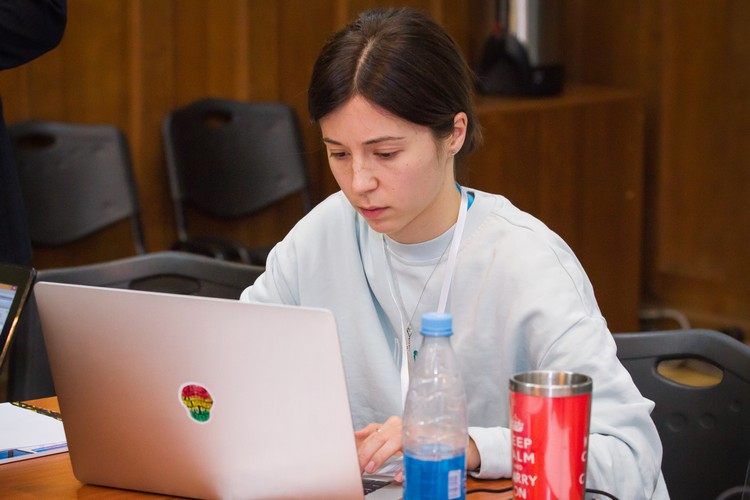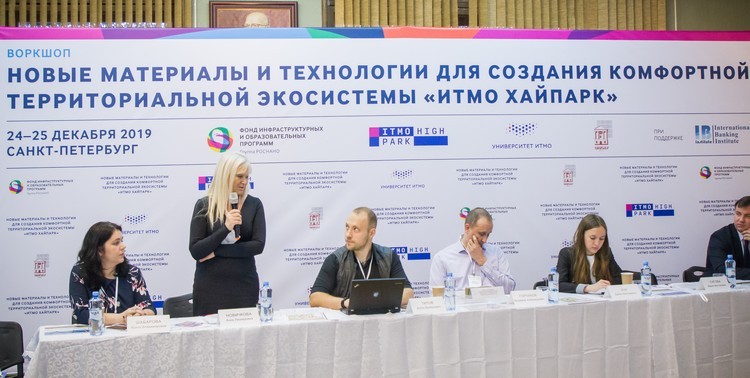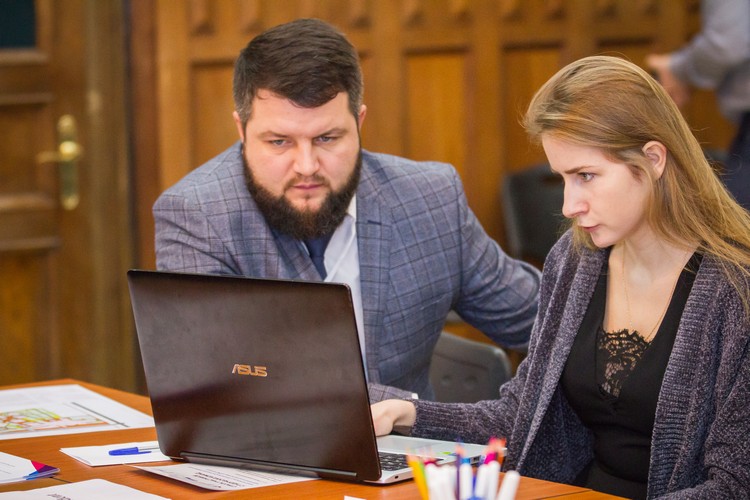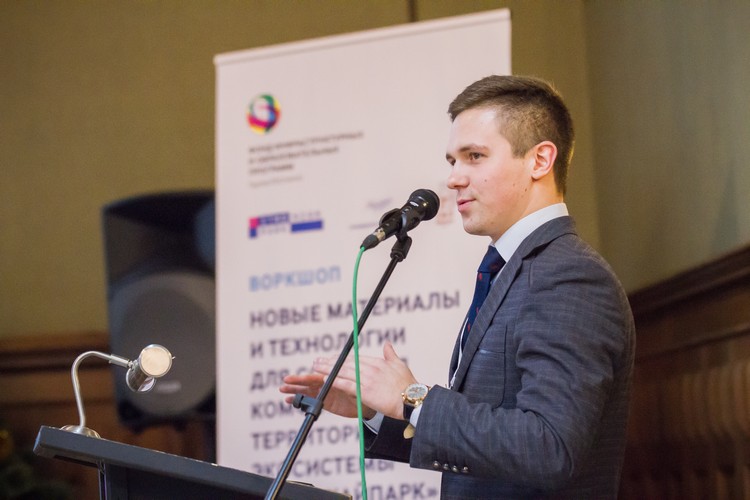Innovative building materials and smart technologies to improve the urban environment: SPbGASU and ITMO University held a joint workshop
A joint workshop of SPbGASU and ITMO University (with the support of the Fund for Infrastructure and Educational Programs) was held from December 24 to 25 at the “Boiling Point” site at the International Banking Institute.
Workshop participants and members of the expert group
The task of the participants was to try to work out optimal and cost-effective solutions using innovative technologies and materials, which in the future could help the improvement of the urban environment. In particular, student proposals can be implemented when creating the ITMO Highpark scientific cluster, a center for applied research and innovation, which includes a dormitory for ITMO University, which is planned to be built in the Pushkin District. Following two days of teamwork, participants submitted their proposals to a group of experts.
Micromobility aimed at the future
Alina Muratova, a graduate of ITMO University, raised the topic of the importance of well-established transport communications at the dormitory due to its remote location. According to Alina, a combination of vehicles - for example, a commuter train and a bicycle or an electric scooter - may be a good solution. Over the past few years, consumer demand for such models of scooters has increased, due to their environmental friendliness and ease of use compared to standard models.
“Given these characteristics, students and teachers, our main audience, will be able to quickly and easily get from the train station to the campus and move around its internal territory,” said Alina.
Nanomodified concrete as a guarantee of structural strength
Presentation of Georgy Khrenov, a graduate student of the SPbGASU Department of Building Materials Technology and Metrology, opened the block of innovative solutions in the use of building materials.
The speaker noted that students and young scientists of SPbGASU are actively engaged in the developments that could improve construction technologies. One of them was created under the leadership of the head of the department of Building Materials Technology and metrology, Professor Yuri V. Pukharenko. This is a nanostructured modification of concrete, which allows strengthening the traditional material by introducing carbon powder into the concrete mixture. The final product is durable, low-wear, and cheap. These indicators are extremely important when it comes to the construction of public buildings and structures.
Workshop participants preparing for presentation
In St. Petersburg, there are several examples of projects where this composite wss used: the Cable-Stayed Bridge, Western High-Speed Diameter, and Pulkovo Airport Terminal.
Another composite material that the workshop participants considered as functional in the construction of dormitory buildings was self-compacting concrete. It is strong, durable, resistant to delaminating, has good sound insulation and a relatively low cost.
Durable and environmentally friendly fiber concrete for public buildings
Maxim Kostrikin, also a graduate student at the SPbGASU Department of Building Materials Technology and Metrology, spoke about the use of integrated solutions for creating floors, corridors and stairs. In particular, he suggested putting a layer of structurally insulating expanded polystyrene concrete over a monolithic reinforced concrete slab, and then adding a layer of polydisperse reinforced concrete screed (with fibers), which would multiply the strength of the floor in several times and at the same time reduce the overall weight of the structure.
Awarding thank-you letters
According to other participants, Yakov Reshetnikov and Alena Gudziy, SPbGASU graduate students, a fiber-reinforced concrete base strengthened with topping (a mixture for the top coating - note) is ideal for installing floors in public buildings (educational institutions, hospitals, industrial enterprises) not only because of the strength, but also because of its hygiene and reduced carbon dioxide emissions.
In the course of presentation
Fiber cement boards and panels with a wood texture can be used in the construction of load-bearing walls due to increased fire resistance and resistance to climatic impacts. It is reasonable to complete the interior decoration with anti-vandal antibacterial paint (the last property is provided to it by the included silver nanoparticles - note). In a building where a significant part of the residents are young people (including teenagers), these characteristics are a must to consider, the workshop participants are sure.
Energy efficient technologies and smart building management
ITMO University student Nikita Miloserdov focused on energy-efficient glazing. Modern energy-efficient glasses differ from ordinary ones in that they integrate one-micron-thick film, which allows collecting solar energy and converting it into electrical energy (ITMO's own development - note).
A solar battery is cheaper than its silicon counterpart, which means it will pay off faster. It is distinguished by high heat efficiency. In hot weather, it absorbs energy and reduces building ventilation costs. In the cold season, panels can be integrated into energy-efficient windows and minimize the heat loss.
Among other solutions, Nikita Miloserdov named kinetic tiles that convert mechanical energy into electricity, and a building management system. It is supposed to include microsensors that monitor all important parameters (for example, humidity, smoke, temperature, water consumption), an access control system with identification via a mobile phone and voice control in residential premises. These innovations will help optimize the microenvironment, making it comfortable and safe.
✔ Experts highly appreciated the result of the participants’ teamwork and wished them to create projects not only in the context of the future, but also taking into account the realities of the present. According to the jury, the proposals, although they need to be finalized, have every chance to be implemented.
{gallery name="Воркшоп с ИТМО 122019"}
At the end of the presentation, the participants were awarded thank-you letters and souvenirs.
The development of innovations and their application to real projects is a priority for St. Petersburg State University of Architecture and Civil Engineering. This area, among other things, includes conducting student workshops. This format is most suitable for the interaction of participants when it comes to socially useful integration of science and business.
Text: Alexandra Podolnikova
✔ Read about the university’s scientific schools , which propose practical solutions for essential problems in civil engineering and architecture







